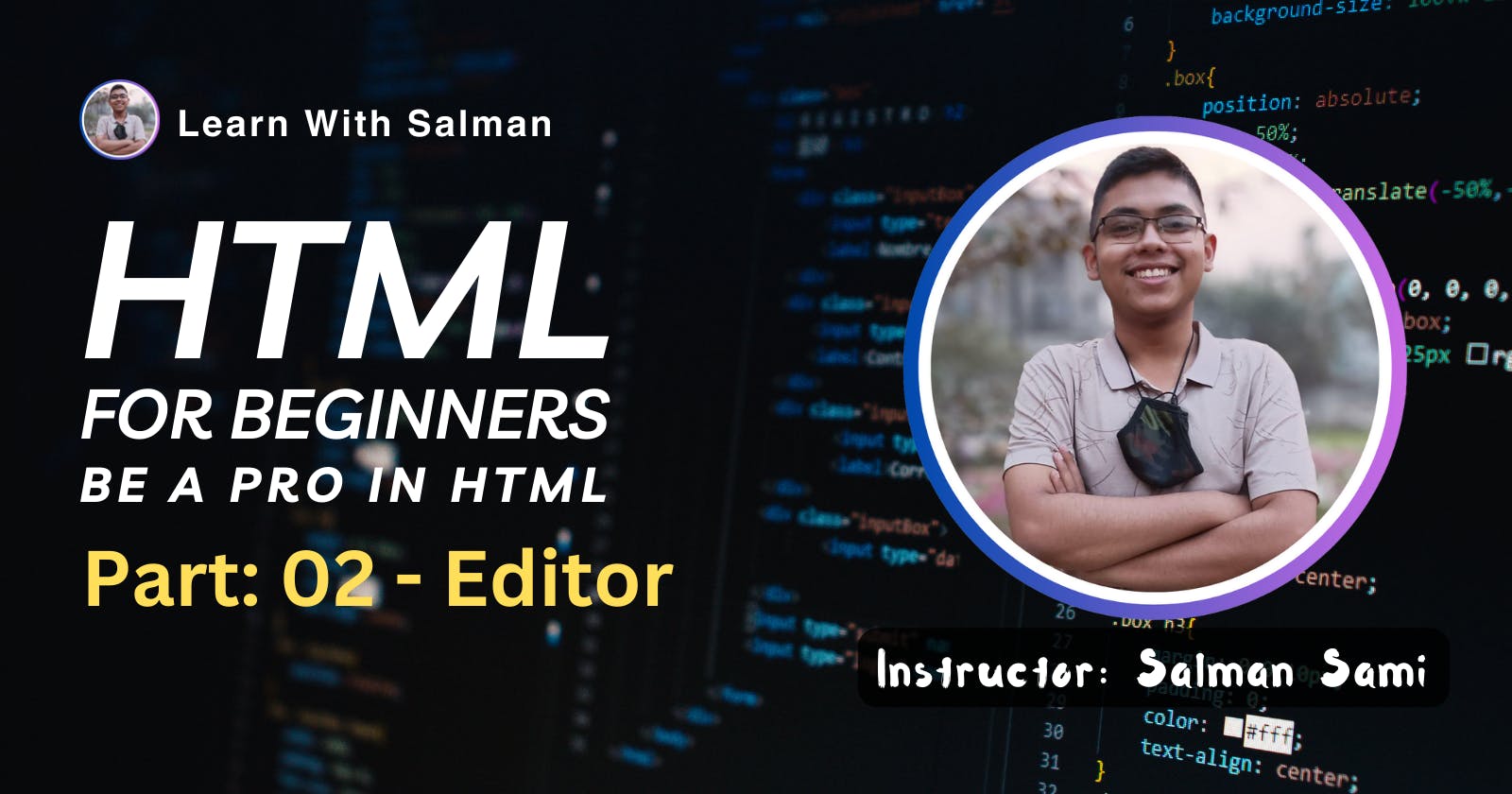Table of contents
- Introduction:
- 1. Choosing Your Text Editor: A Simple Beginning:
- 2. Setting Up Your HTML Document: The Blank Canvas:
- 3. Understanding the HTML Document: A Deeper Dive:
- 4. Opening Your HTML Document: Browsing Your Creation:
- 5. Enhancing Your Editor: Specialized HTML Editors:
- 6. Syntax Highlighting: A Visual Guide:
- 7. Auto-Completion: A Time-Saving Marvel:
- 8. Adding CSS and JavaScript: Expanding Your Toolkit:
- 9. Version Control Integration: Keeping Your Code Safe:
- 10. Previewing in Real-Time: A Dynamic Experience:
- Conclusion:
Introduction:
Welcome to the next chapter of our HTML journey! In this installment, we'll explore the fundamental tool every aspiring web developer needs – the HTML editor. Whether you're just starting or looking to refine your coding skills, a reliable HTML editor is your trusty companion in crafting digital masterpieces. In this beginner-friendly guide, we'll unravel the art of using simple text editors like Notepad or TextEdit to create HTML wonders. So, let's dive in and learn HTML step by step, bringing your coding aspirations to life!
1. Choosing Your Text Editor: A Simple Beginning:
The beauty of HTML lies in its simplicity, and your choice of a text editor reflects this ethos. Begin by selecting a basic text editor like Notepad on Windows or TextEdit on Mac. These editors provide a clean slate for your HTML endeavors without unnecessary formatting that can complicate the learning process.
2. Setting Up Your HTML Document: The Blank Canvas:
Let's kick things off by creating a basic HTML document. Follow these steps:
a. Open your chosen text editor. b. Type the following code:
<!DOCTYPE html>
<html>
<head>
<title>My First HTML Page</title>
</head>
<body>
<h1>Hello, World!</h1>
<p>This is my first HTML page. Welcome to the digital world!</p>
</body>
</html>
c. Save the file with an ".html" extension, for example, "index.html".
3. Understanding the HTML Document: A Deeper Dive:
Let's break down the components of our HTML document:
<!DOCTYPE html>: Declares the HTML version.<html>: The root element.<head>: Contains metadata about the document.<title>: Sets the title of the web page.<body>: Holds the content of the web page.<h1>: A top-level heading.<p>: A paragraph.
This simple structure forms the basis of HTML documents.
4. Opening Your HTML Document: Browsing Your Creation:
Now that you've crafted your HTML document, it's time to see it in action. Open your file using a web browser of your choice. Simply right-click on the HTML file and select "Open with" to choose your preferred browser.
5. Enhancing Your Editor: Specialized HTML Editors:
While basic text editors serve as excellent starting points, you may choose to explore specialized HTML editors that offer additional features tailored to web development. Editors like Visual Studio Code, Atom, or Sublime Text provide syntax highlighting, auto-completion, and other tools that streamline your coding experience.
6. Syntax Highlighting: A Visual Guide:
One of the advantages of specialized HTML editors is syntax highlighting. This feature color-codes different elements in your code, making it visually appealing and easier to identify errors or inconsistencies. Take advantage of this helpful feature to elevate your coding prowess.
7. Auto-Completion: A Time-Saving Marvel:
Auto-completion is a game-changer for efficiency. Specialized editors often provide suggestions as you type, reducing the likelihood of typos and speeding up your coding process. Embrace this time-saving marvel as you progress in your HTML adventures.
8. Adding CSS and JavaScript: Expanding Your Toolkit:
As you advance in web development, you'll often find yourself incorporating CSS for styling and JavaScript for interactivity. Specialized HTML editors seamlessly integrate these languages, offering a comprehensive toolkit for crafting dynamic and visually appealing websites.
9. Version Control Integration: Keeping Your Code Safe:
Version control is a crucial aspect of collaborative coding. Some HTML editors, especially specialized ones, offer built-in or integrated support for version control systems like Git. This ensures that your codebase remains organized, secure, and easily manageable, particularly in team projects.
10. Previewing in Real-Time: A Dynamic Experience:
Specialized HTML editors often provide live preview features, allowing you to see changes in real-time as you code. This dynamic experience enhances your ability to experiment, refine, and perfect your web pages on the fly.
Conclusion:
Congratulations on stepping into the world of HTML editing! You've created your first HTML document, explored the basics of Notepad or TextEdit, and dipped your toes into the possibilities of specialized HTML editors. As you continue your journey, remember that the coding canvas is vast and ever-evolving.
Feel free to share your experiences, ask questions, or discuss your coding adventures in the comments below. What challenges have you faced, and what discoveries have you made on your HTML editor journey? Join the conversation, and let's build a community of learners and creators together!
Stay tuned for Part 2 of our HTML tutorial series, where we'll delve into the basics of HTML and unlock the secrets of building a solid foundation for your web development skills. Happy coding!
